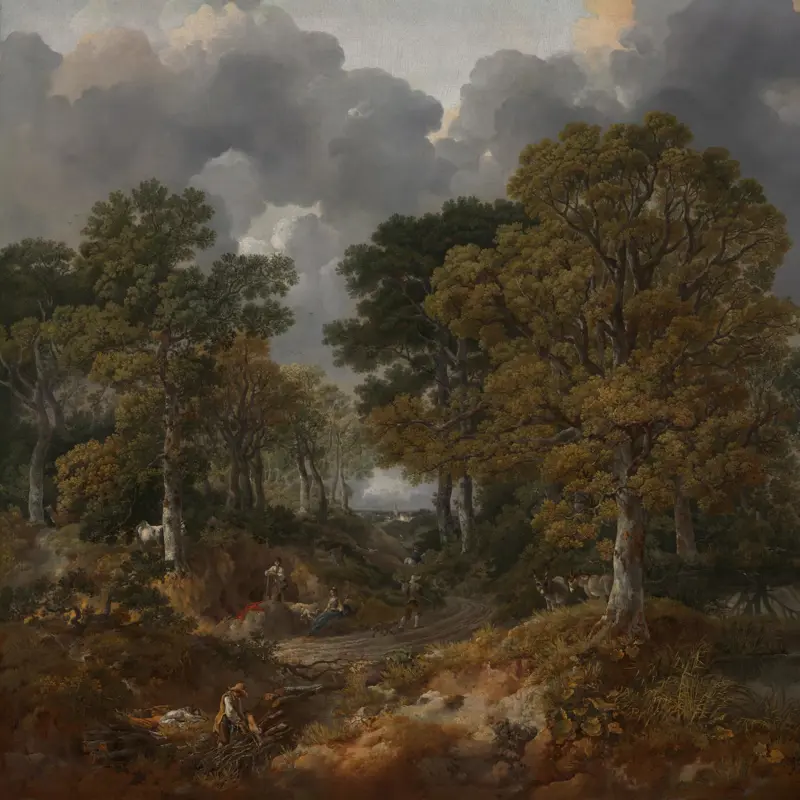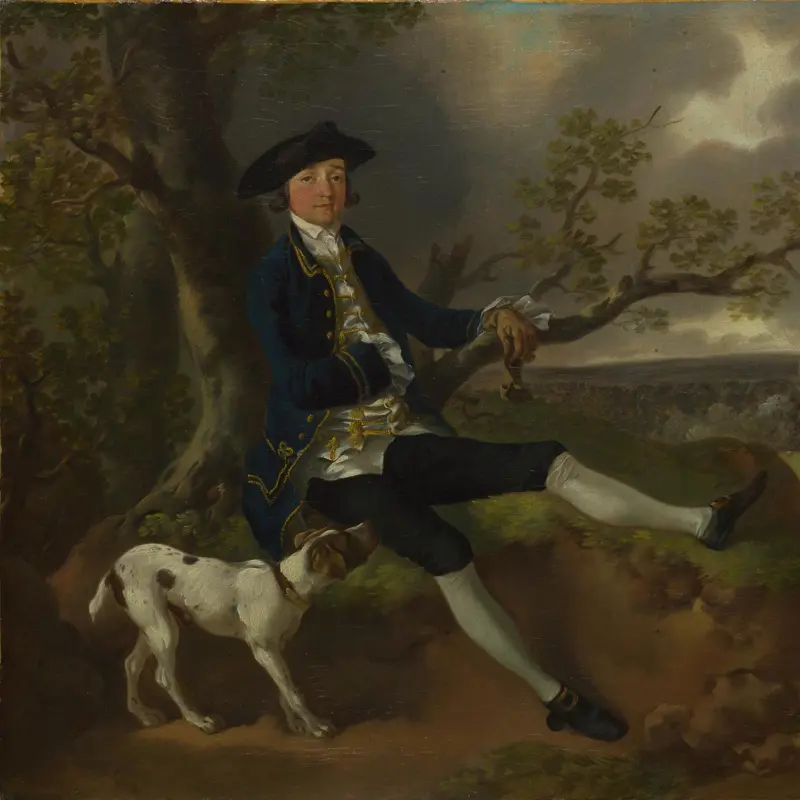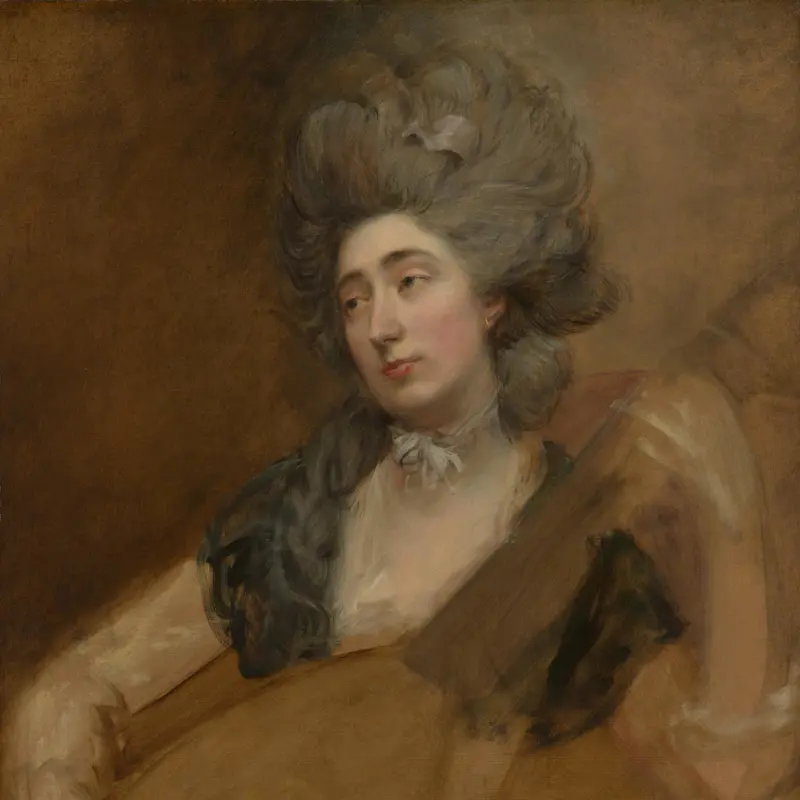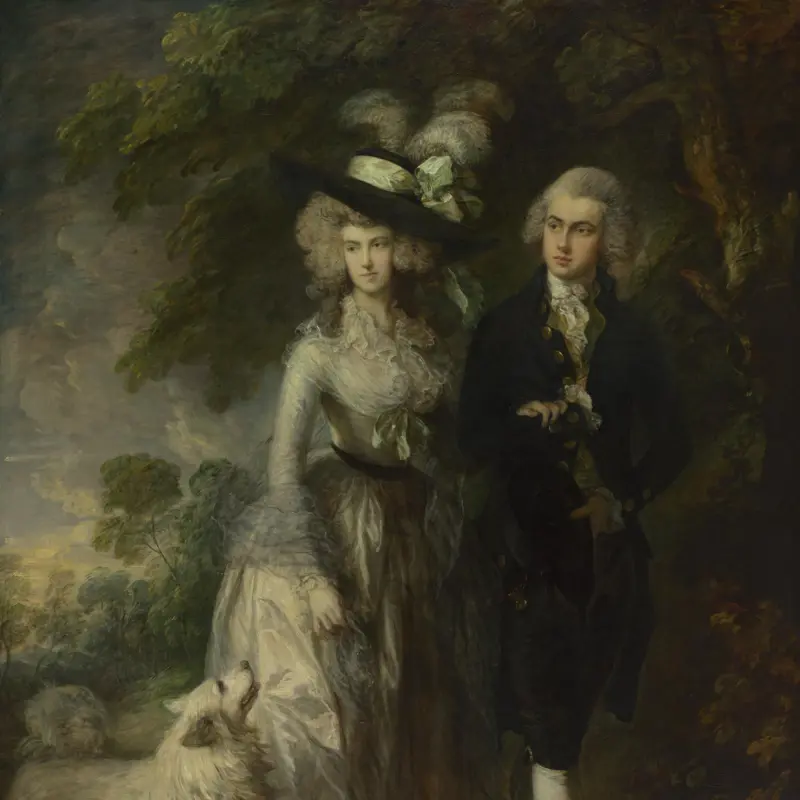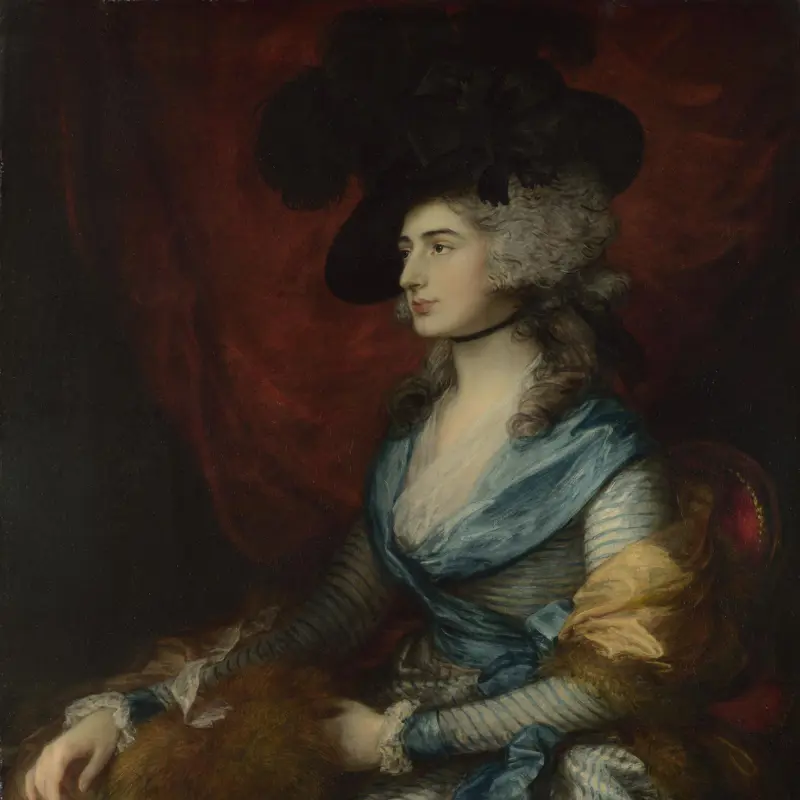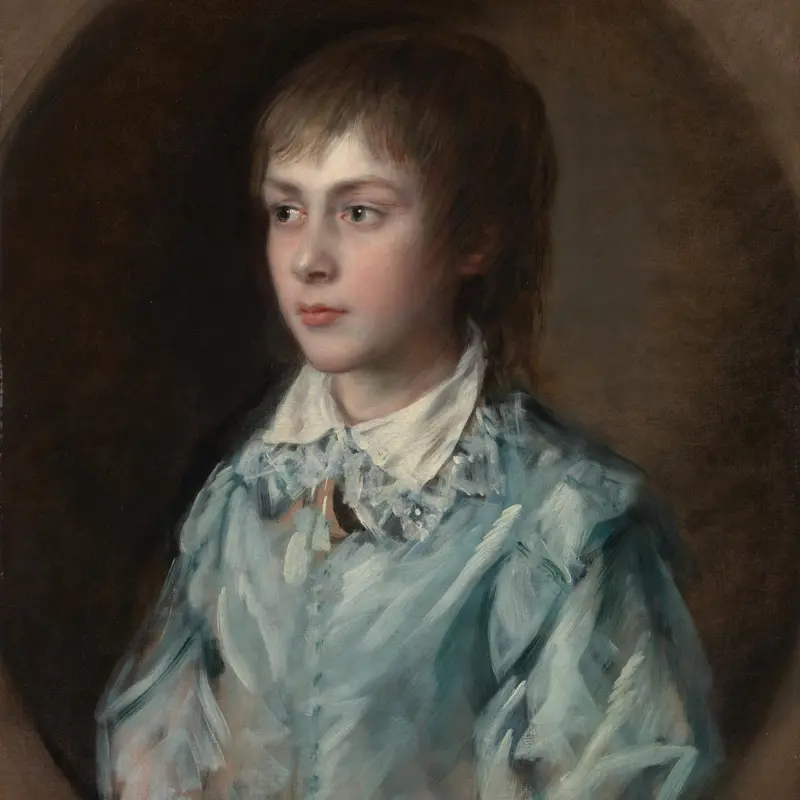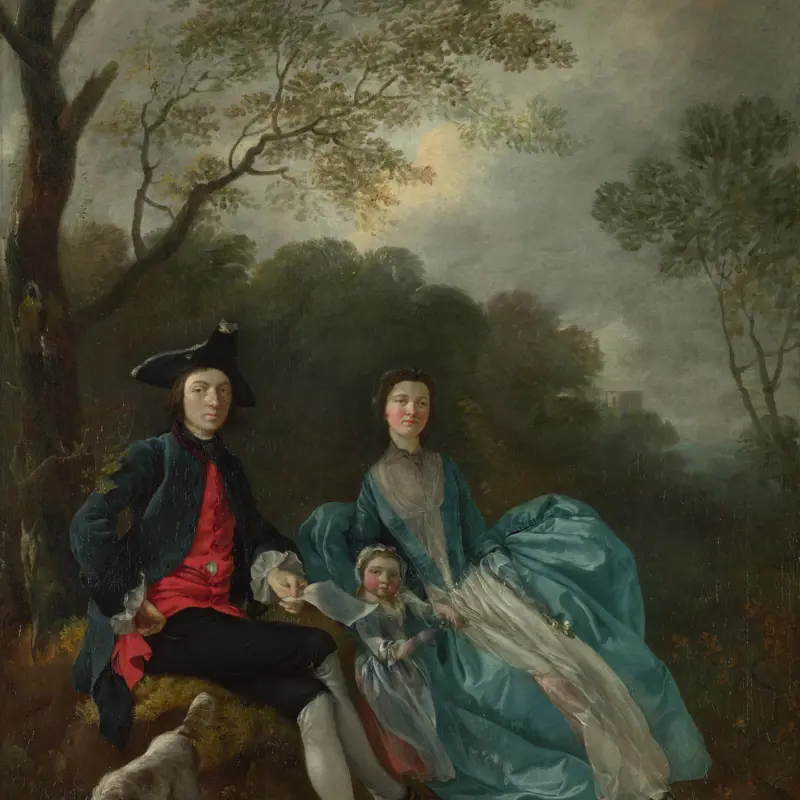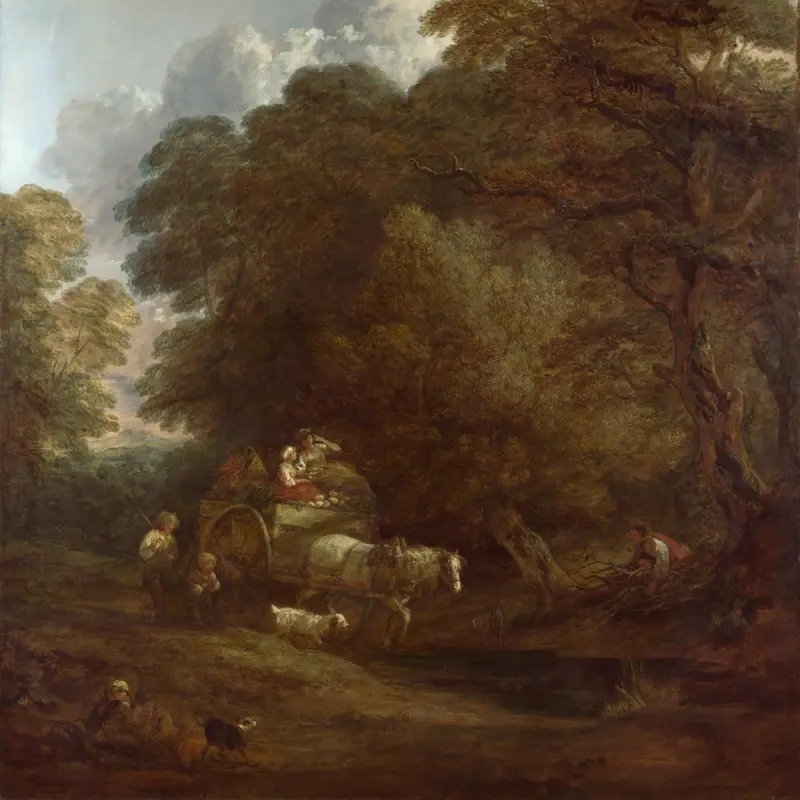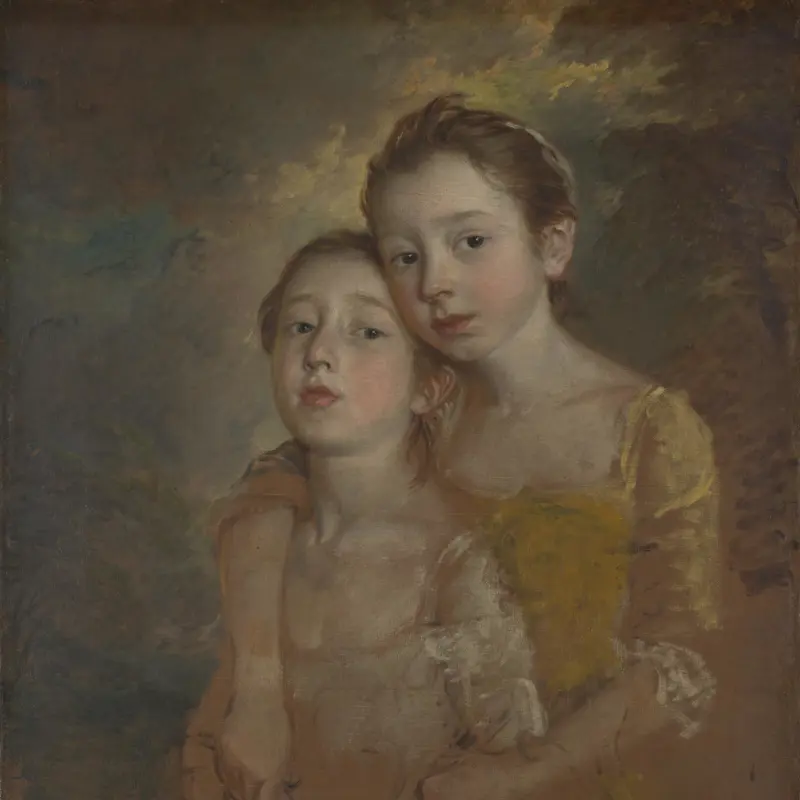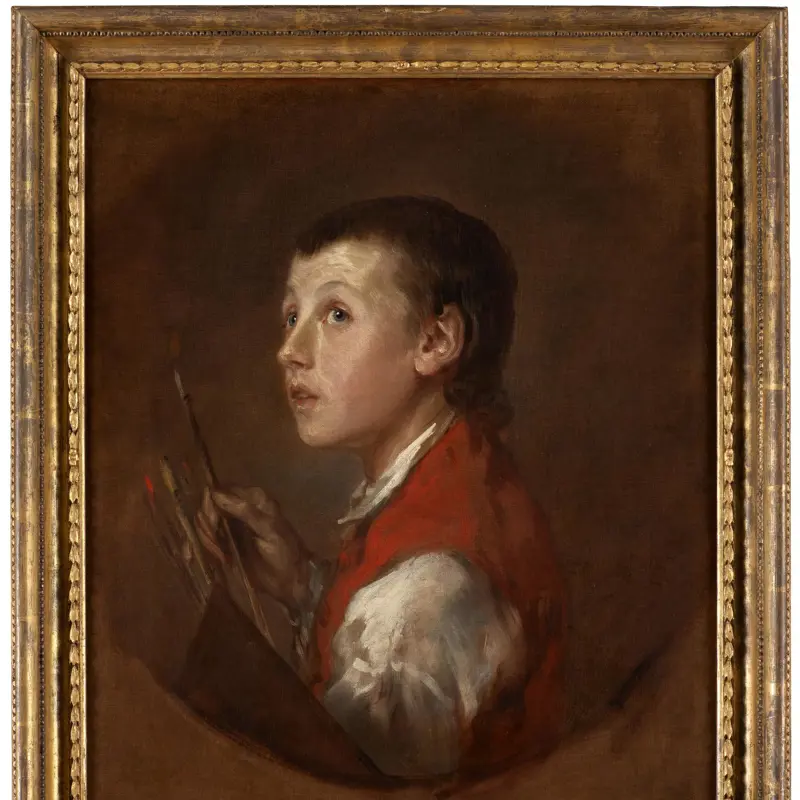Thomas Gainsborough, 'Dr Ralph Schomberg', about 1770
About the work
Overview
In 1759 Gainsborough moved to the fashionable spa town of Bath, where he established a very successful portrait-painting practice and remained for 15 years. He painted this portrait of Dr Ralph Schomberg, aged about 56, in Bath around 1770.
Gainsborough consulted various doctors during his years in Bath, both for his own medical problems and about the recurring mental instability of his elder daughter, Mary. This portrait may have been painted in place of medical fees.
Dr Schomberg stands at a slight angle to us. His pose is upright and subtly deferential, and his expression conveys benevolent concern. The romantically wild yet artificial landscape, with a wooded hillside under a darkening sky, is painted with enormous speed and sureness, using bold unblended brushstrokes so fluid that dark paint has run down the canvas at the bottom left. The red of Schomberg’s frock coat has faded unevenly in the light.
Key facts
Details
- Full title
- Dr Ralph Schomberg
- Artist
- Thomas Gainsborough
- Artist dates
- 1727 - 1788
- Date made
- about 1770
- Medium and support
- oil on canvas
- Dimensions
- 233 × 153.5 cm
- Acquisition credit
- Bought, 1862
- Inventory number
- NG684
- Location
- Room 34
- Collection
- Main Collection
- Frame
- 19th-century French Frame
Provenance
Additional information
Text extracted from the ‘Provenance’ section of the catalogue entry in Judy Egerton, ‘National Gallery Catalogues: The British Paintings’, London 2000; for further information, see the full catalogue entry.
Exhibition history
-
2021Creating a National CollectionSouthampton City Art Gallery28 May 2021 - 2 September 2021
-
2023Masterpieces from the National GalleryShanghai Art Museum East17 January 2023 - 7 May 2023National Museum of Korea2 June 2023 - 9 October 2023Hong Kong Palace Museum22 November 2023 - 11 April 2024Chimei Museum2 May 2024 - 1 September 2024
Bibliography
-
1915W.T. Whitley, Thomas Gainsborough, London 1915
-
1928W.T. Whitley, Art in England 1800-1820, Cambridge 1928
-
1928W.T. Whitley, Artists and their Friends in England 1700-1799, London 1928
-
1946Davies, Martin, National Gallery Catalogues: British School, London 1946
-
1946M. Davies, Paintings and Drawings on the Backs of National Gallery Pictures, London 1946
-
1959Davies, Martin, National Gallery Catalogues: British School, 2nd edn (revised), London 1959
-
1976H. Potterton, Reynolds and Gainsborough, Themes and Painters in the National Gallery 2, London 1976
-
1988D. Bomford, A. Roy and D. Saunders, 'Gainsborough's "Dr Ralph Schomberg"', National Gallery Technical Bulletin, XII, 1988, pp. 44-57
-
1992G. Reynolds, 'Auctioneers, Dealers, Constables and Crooks', Apollo, CXXXV, 1992
-
1998J. Egerton, The British School, London 1998
-
2000Egerton, Judy, National Gallery Catalogues: The British Paintings, revised edn, London 2000
-
2001
C. Baker and T. Henry, The National Gallery: Complete Illustrated Catalogue, London 2001
About this record
If you know more about this work or have spotted an error, please contact us. Please note that exhibition histories are listed from 2009 onwards. Bibliographies may not be complete; more comprehensive information is available in the National Gallery Library.

